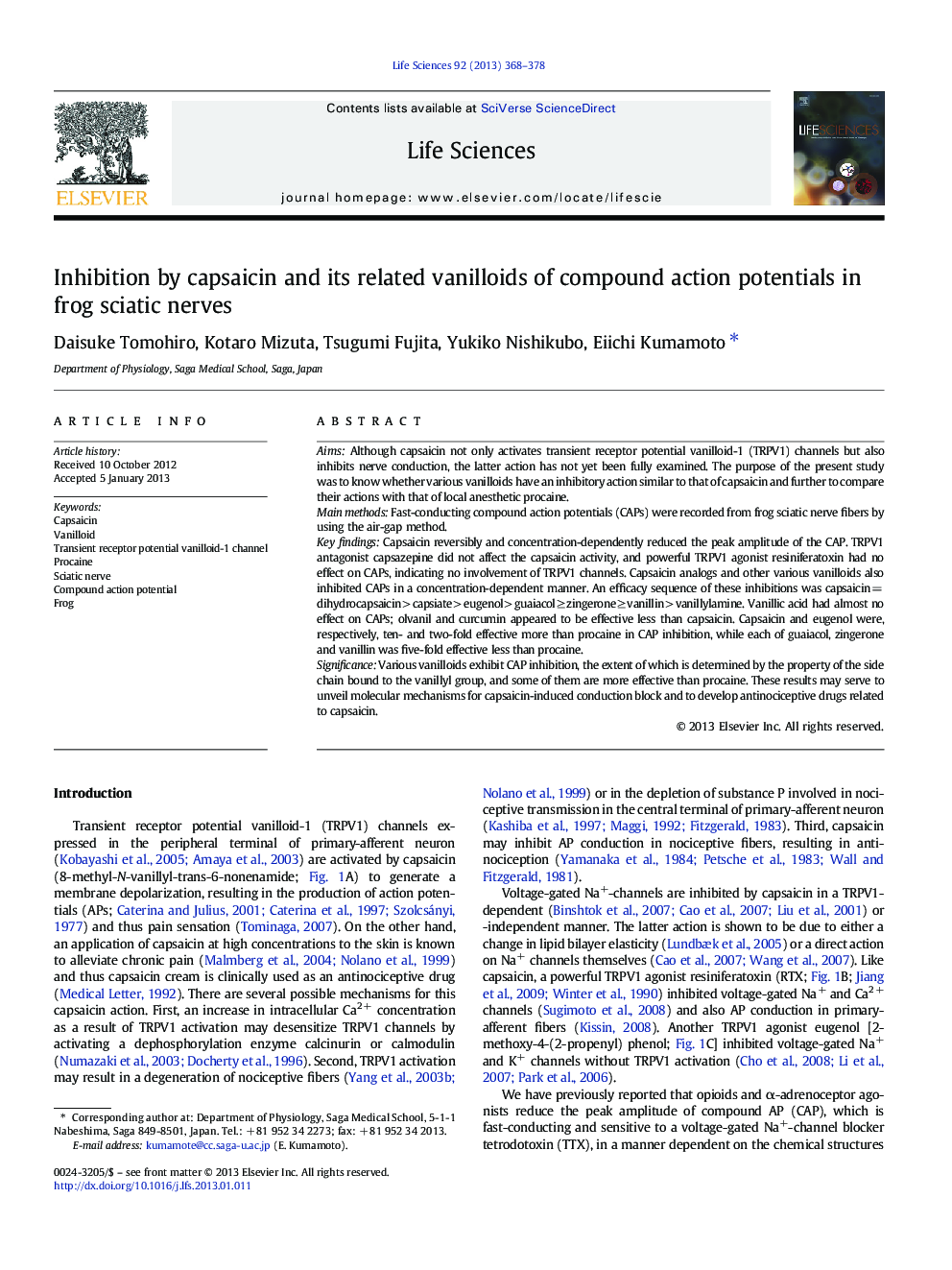| کد مقاله | کد نشریه | سال انتشار | مقاله انگلیسی | نسخه تمام متن |
|---|---|---|---|---|
| 2551515 | 1560634 | 2013 | 11 صفحه PDF | دانلود رایگان |

AimsAlthough capsaicin not only activates transient receptor potential vanilloid-1 (TRPV1) channels but also inhibits nerve conduction, the latter action has not yet been fully examined. The purpose of the present study was to know whether various vanilloids have an inhibitory action similar to that of capsaicin and further to compare their actions with that of local anesthetic procaine.Main methodsFast-conducting compound action potentials (CAPs) were recorded from frog sciatic nerve fibers by using the air-gap method.Key findingsCapsaicin reversibly and concentration-dependently reduced the peak amplitude of the CAP. TRPV1 antagonist capsazepine did not affect the capsaicin activity, and powerful TRPV1 agonist resiniferatoxin had no effect on CAPs, indicating no involvement of TRPV1 channels. Capsaicin analogs and other various vanilloids also inhibited CAPs in a concentration-dependent manner. An efficacy sequence of these inhibitions was capsaicin = dihydrocapsaicin > capsiate > eugenol > guaiacol ≥ zingerone ≥ vanillin > vanillylamine. Vanillic acid had almost no effect on CAPs; olvanil and curcumin appeared to be effective less than capsaicin. Capsaicin and eugenol were, respectively, ten- and two-fold effective more than procaine in CAP inhibition, while each of guaiacol, zingerone and vanillin was five-fold effective less than procaine.SignificanceVarious vanilloids exhibit CAP inhibition, the extent of which is determined by the property of the side chain bound to the vanillyl group, and some of them are more effective than procaine. These results may serve to unveil molecular mechanisms for capsaicin-induced conduction block and to develop antinociceptive drugs related to capsaicin.
Journal: Life Sciences - Volume 92, Issues 6–7, 14 March 2013, Pages 368–378